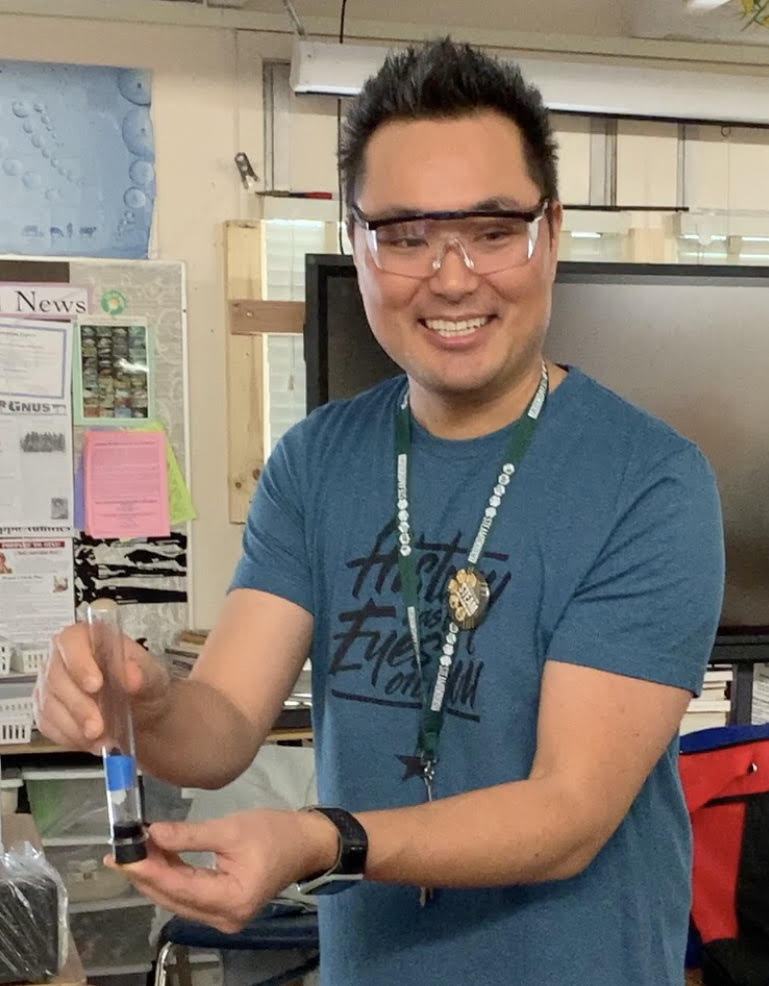The Concord Consortium’s Teacher Ambassador program commemorates our 25th anniversary by recognizing 25 outstanding teachers who have included our digital inquiry resources into their STEM classrooms. We congratulate them on their innovation and creativity.
Michael Lim, Gardena Senior High School, Gardena, CA
Michael Lim loves literature that’s inspiring. “What better way to enjoy meaningful texts than to teach them?” he thought. So he earned his college degree in English education. However, when he graduated there were no jobs available. Thankfully, he also had a “few years of pre-med classes,” so he put them to good use and became a long-term substitute chemistry teacher. Michael went on to pass the chemistry certification exam, and has been teaching 10th, 11th, and 12th grade chemistry for twelve years.
A huge fan of three-dimensional NGSS teaching, Michael engages his students in drawing models, constructing explanations, and evaluating evidence to better understand a complex and puzzling phenomenon that is relevant to them. For example, he loves the curriculum module: “Why do some things stick together and other things don’t?” Developed by the Interactions project—a collaboration between the CREATE for STEM Institute at Michigan State University and the Concord Consortium—this module is the recipient of an NGSS Design Badge.

Michael describes his own “mind blowing” experience after using this curriculum. When preparing an assessment for his students, he realized that his own understanding of the Van de Graaff generator used in the module was “deeper, richer, and more supported by firsthand evidence.” He could use atomic-level reasoning to explain the phenomenon and knew that project-based learning “is the better way to go.” He gave up didactic teaching, and beams, “After facilitating three-dimensional instruction for the past four years, I can never go back to teaching long lists of detailed facts for students to memorize.”
Michael first learned about the Concord Consortium through a workshop about the Interactions curriculum, which supports students in understanding the fundamental forces at the heart of physics, chemistry, biology, and other scientific disciplines. In addition, he has used many other Concord Consortium STEM resources, including GEODE and High-Adventure Science. And he describes the exciting gasps of student understanding (“oooh!”, “that makes sense!”) after he shared an Energy2D convection current model with his class.
In his spare time, Michael loves to run barefoot, and has completed the Los Angeles Marathon without shoes, as well as the 50-mile endurance challenge ultramarathon barefoot and with running sandals. He dreams of a vacation to Bora Bora to swim, fish, eat, and celebrate life with his wife.
Favorite ice cream: Mint ’n Chip